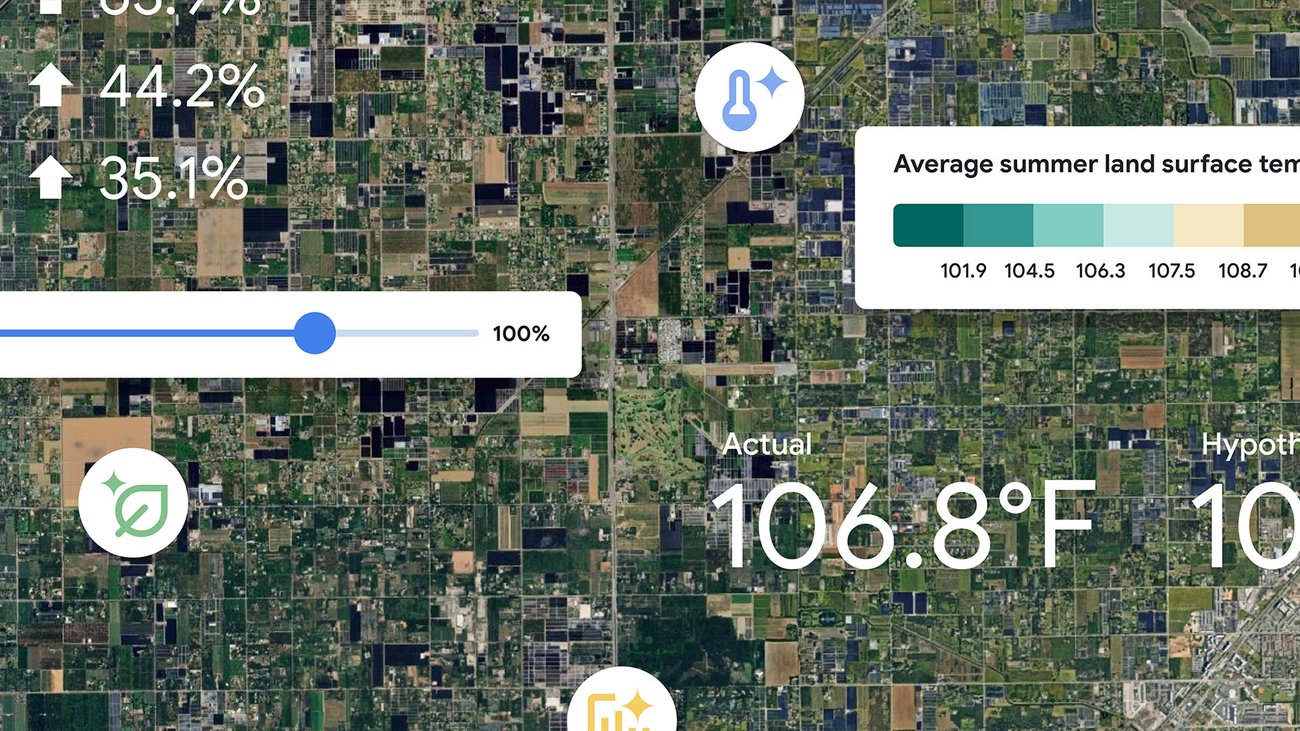2024 Could Be the Hottest Year on Record: Google’s AI Tool Aims to Combat Urban Heat Islands
It is anticipated that 2024 might surpass 2023 in terms of being the hottest year ever recorded. This upward trend in global temperatures has a significant and uneven impact on individuals residing in urban heat islands. These are areas where man-made structures, such as roads and buildings, absorb and then re-emit heat, causing localized temperature spikes. Urban heat islands contribute to cities heating up at twice the rate of the global average, posing severe risks to vulnerable populations, including the elderly, children, and individuals with chronic health conditions. For instance, heat-related mortality among people aged 65 and older surged by approximately 85% between 2017 and 2021.
In an effort to mitigate the adverse effects of rising temperatures and safeguard community health, Google Research is advancing its initiatives to leverage Artificial Intelligence (AI) in developing tools that address extreme heat. Their latest innovation, the Heat Resilience tool, utilizes AI to analyze satellite and aerial imagery. This technology helps cities measure the effectiveness of cooling interventions, such as tree planting and the installation of highly reflective surfaces like cool roofs.
Understanding Urban Heat Islands
Urban heat islands are a result of human activities and infrastructure. The dense concentration of buildings, roads, and other infrastructure absorbs and retains heat more than natural landscapes, leading to higher temperatures in urban areas compared to their rural surroundings. This phenomenon not only makes cities hotter but also exacerbates the effects of heat waves, making them more dangerous and frequent.
For layman readers, think of urban heat islands as giant heat traps. When the sun beats down on a city, the asphalt, concrete, and buildings soak up the heat and slowly release it, keeping the city warmer even after sunset. This is why cities can feel unbearably hot during the summer, especially during heatwaves.
The Role of AI in Combating Extreme Heat
Google’s new Heat Resilience tool is designed to provide critical data that can help cities identify their hottest and most vulnerable communities. The tool employs AI-powered object detection and other models to account for local characteristics, such as the amount of green space available and the reflective quality of building roofs. This detailed analysis enables urban planners and local governments to understand the impact of potential cooling interventions at a granular, neighborhood level.
For example, by analyzing satellite images, the tool can identify areas with little to no green space and recommend where tree planting could be most effective. Similarly, it can assess the reflective quality of roofs and suggest the installation of cool roofs, which are designed to reflect more sunlight and absorb less heat.
Practical Applications and Pilot Programs
Quantifiable data is essential for making informed decisions about where to implement cooling strategies. Google’s Heat Resilience tool is currently being piloted in 14 U.S. cities. Officials in these cities are using the tool to identify neighborhoods most susceptible to extreme heat and to develop comprehensive plans to tackle rising temperatures.
Consider a city like Phoenix, Arizona, known for its scorching summers. Using the Heat Resilience tool, city planners can pinpoint areas with high heat vulnerability and prioritize them for interventions like planting shade trees or installing cool roofs. This targeted approach ensures that resources are used efficiently and effectively to combat the heat.
Why This Matters
The implications of rising temperatures are far-reaching and affect various aspects of life, from public health to energy consumption. Vulnerable communities, including the elderly, children, and those with chronic health conditions, are particularly at risk. By utilizing advanced technologies like AI, cities can take proactive measures to mitigate these risks.
Moreover, addressing urban heat islands can lead to significant energy savings. For instance, cooler roofs can reduce the need for air conditioning, thereby lowering electricity consumption and reducing greenhouse gas emissions. This not only helps in combating climate change but also results in cost savings for residents.
Additional Perspectives
Experts in the field have lauded Google’s initiative as a significant step forward in the fight against climate change. Dr. Jane Smith, a climate scientist at the University of California, notes, "The use of AI to analyze and address urban heat islands is a game-changer. It allows for precise interventions that can make a substantial difference in a relatively short period."
However, some critics argue that while technology is essential, it should be complemented by broader policy measures. "AI tools are incredibly useful, but they need to be part of a larger strategy that includes policy changes, public awareness campaigns, and community involvement," says Robert Johnson, an urban planner based in New York.
How Can You Help?
While large-scale interventions by city planners and governments are crucial, individuals can also play a role in mitigating urban heat. Here are some simple actions you can take:
- Plant Trees: If you have a garden or balcony, consider planting trees or shrubs. Plants can provide shade and help cool the surrounding area.
- Cool Roofs: If you own property, think about installing a cool roof. These roofs are designed to reflect more sunlight and absorb less heat.
- Energy Efficiency: Use energy-efficient appliances and consider reducing your use of air conditioning. This not only saves energy but also reduces the heat emitted by these devices.
- Community Involvement: Participate in local initiatives aimed at greening your neighborhood. Community gardens, tree planting drives, and other local efforts can collectively make a big difference.
Conclusion
As we face the prospect of 2024 potentially being the hottest year on record, the importance of addressing urban heat islands becomes ever more pressing. Google’s AI-driven Heat Resilience tool offers a promising solution by providing the data needed for informed decision-making. By identifying the most vulnerable neighborhoods and recommending effective cooling strategies, this innovative tool can help cities combat extreme heat more efficiently.
While technology plays a crucial role, it is essential to remember that combating climate change requires a collective effort. From policy changes to individual actions, every step counts in making our cities more resilient to rising temperatures. As we look ahead, the integration of advanced technologies like AI with community-driven initiatives and robust policies will be key to creating a sustainable and cooler future for all.
For more Information, Refer to this article.


































